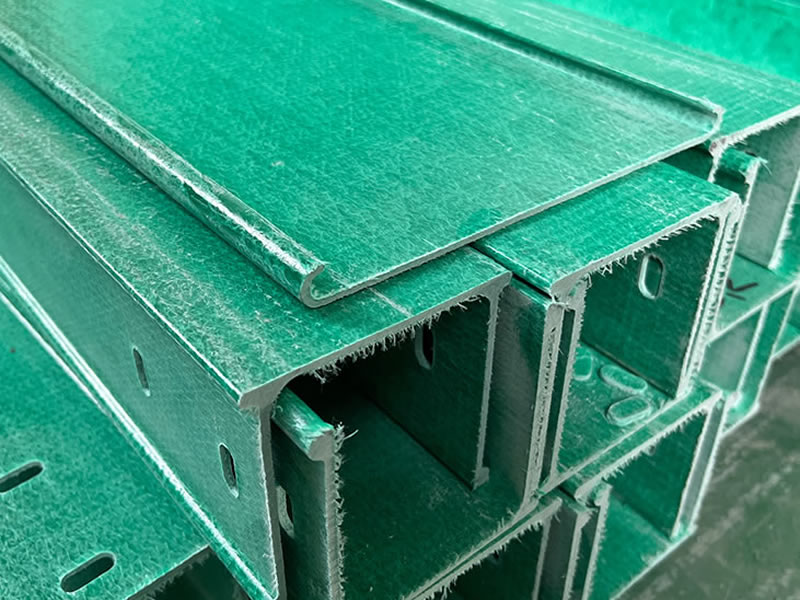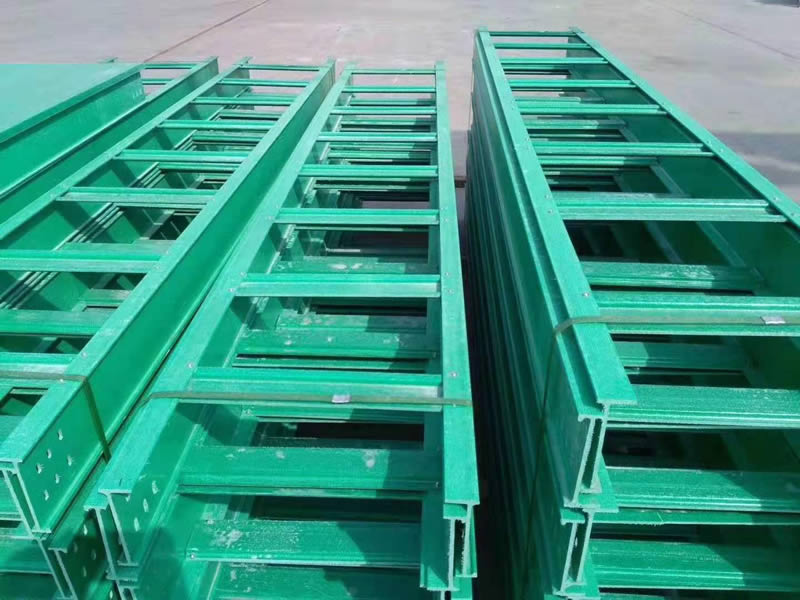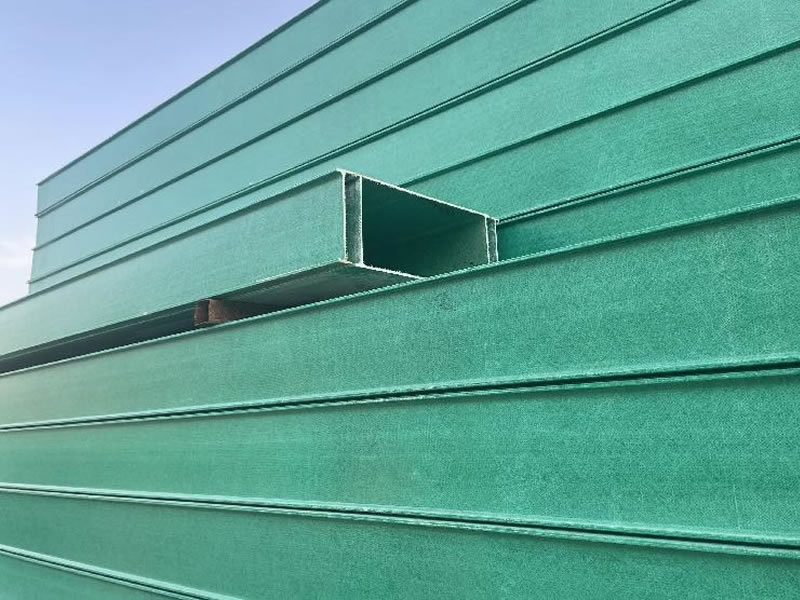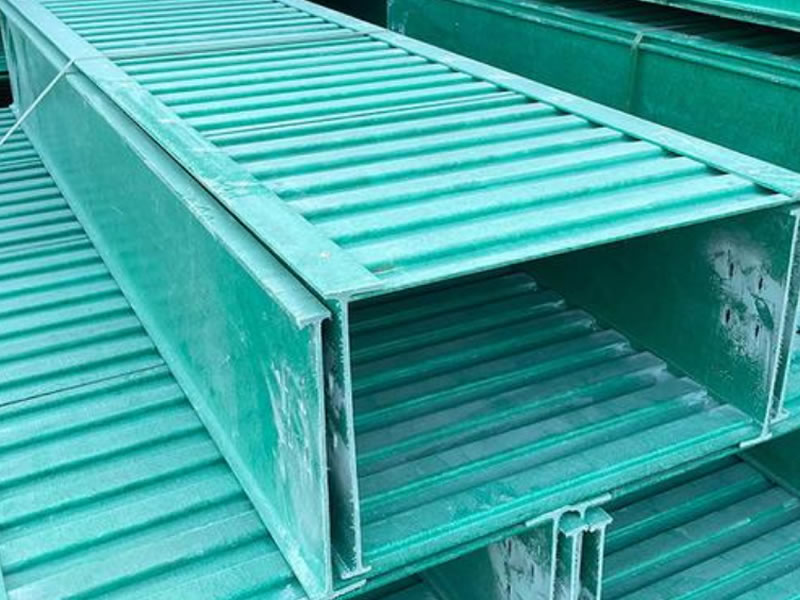
FRP Cable Trays: Classifications, Safe Working Loads, and Test Report
Hengshui Hongwo Technology Co., Ltd. offers Fiberglass FRP (Fiber Reinforced Plastic) Cable Trays, designed for efficient cable management in industrial and commercial settings. These trays, made from a mix of fiberglass and plastic resin, are both strong and durable. Our trays’ durability and long-term performance in challenging conditions make them a cost-effective, reliable solution for cable management.
FRP/GRP Cable Tray Classification
FRP (Fiber Reinforced Plastic) and GRP (Glass Reinforced Plastic) cable trays are essential components in modern cable management systems. These trays come in various types, each serving specific needs and environments.
Each type of FRP/GRP cable tray serves a specific purpose. The choice depends on factors like the required level of cable protection, the need for ventilation or heat dissipation, ease of access for maintenance, and the environmental conditions of the installation site. The trough-type offers the most protection, the ladder-type the best ventilation, the tray-type balances both, and the reinforced type provides the highest strength for demanding applications.
Safe Working Load of FRP Cable Tray
- Material: The safe working load of FRP cable trays is influenced by the material composition, particularly the type of fiberglass and resin used. The quality and density of the fiberglass, as well as the type of resin, can significantly affect the strength and load- bearing capacity of the tray. The specific resin types and additives used in the FRP can greatly influence its flame retardancy and heat resistance.
- Support and Hanger Span: The span between supports or hangers is a critical factor in determining the safe working load. Generally, shorter spans can support heavier loads. For instance, a tray with a span of 1500mm will typically support less weight than one with a 1000mm span. We usually use 2000mm.
- Safe working load values for FRP (Fiber Reinforced Plastic) cable trays with side heights of 100mm, 150mm, and 200mm
Side Height 100mm: Cable trays with a side height of 100mm are typically designed for lighter loads. The safe working load for this size might range from a few kilograms up to several tens of kilograms per meter, depending on the span between supports and the material composition.
Side Height 150mm: A 150mm side height suggests a tray designed for moderate loads. The safe working load for this size could be higher than for the 100mm variant, potentially ranging from several tens of kilograms to over a hundred kilograms per meter, again dependent on the span and material.
Side Height 200mm: Trays with this side height are generally designed for heavier loads. The safe working load might range significantly, potentially handling several hundred kilograms per meter. - Flame Retardancy: Many FRP materials used in cable trays are engineered to be flame retardant. This means they are designed to resist ignition and slow the spread of flames. The degree of flame retardancy can vary, and it’s often rated using industry standards. For example , a common rating system is the UL 94 standard, which includes classifications like V-0, V-1, or V-2, with V-0 being the highest (most flame-retardant) rating.
- Heat Resistance: FRP materials also have varying degrees of heat resistance. This refers to the ability of the material to maintain its structural integrity and performance under high temperatures. Common ratings might indicate a maximum continuous use temperature, such as 130°C (266°F), but these values can differ based on the resin and additives used in the FRP.
Advantages
- Strong Corrosion Resistance: Our Fiberglass FRP Cable Trays excel in environments with high corrosion potential, such as those with exposure to acids, alkalis, chemicals, moisture, and salt. This makes them perfect for use in chemical plants, wastewater facilities, and coastal areas.
- Flame Retardance and Safety: The trays are flame retardant, anti-static, and non-conductive, enhancing safety in cable management. Their non-conductive nature is particularly important in minimizing electrical hazards, ensuring safety in environments where avoiding electrical contact is crucial.
- Durability and Longevity: These trays exhibit excellent aging resistance, contributing to a longer service life. Their lack of recycling value also deters theft.
- Ease of Installation: Being lightweight and easy to cut, our cable trays facilitate simpler installation and can be effortlessly shaped to fit specific requirements. This quality is especially beneficial for large-scale projects or where maintaining the integrity of the supporting structure is important.
Test Report
Samples number: 20210608434 Sample size: PCT250x150x2mm
|
Test items |
Technical Requirement |
Test result |
||
|
Test value |
Single conclusion |
|||
|
Appearance quality |
The surface of the product shall be flat and smooth, with uniform color, and shall be free of wrinkles, cracks, particles, glue flow, resin peeling, fiber exposure and surface sticking. |
Meet the requirements |
qualified |
|
|
The glue content is uniform, the curing is stable, and there is no delamination. The accumulated area of bubbles on the surface of a single product shall not be greater than 100mm2/m2, and the maximum area of a single bubble shall not be greater than 15mm2. |
||||
|
Structure size |
Width |
250±2 |
250 |
qualified |
|
Height |
150±2 |
150 |
qualified |
|
|
Thickness |
2(0, +0.2) |
2.2 |
qualified |
|
|
tensile strength Mpa |
direction |
≥560 |
897 |
qualified |
|
bending strength |
direction |
≥270 |
1237 |
qualified |
|
impact strength kJ/m2 |
≥200 |
415 |
qualified |
|
|
Barcol hardness |
≥45 |
56 |
qualified |
|
|
Density g/cm3 |
≥1.9 |
2.1 |
qualified |
|
|
Load deformation temperature ℃ |
≥150 |
>160 |
qualified |
|
|
Oxygen index % |
≥28 |
28 |
qualified |
|





